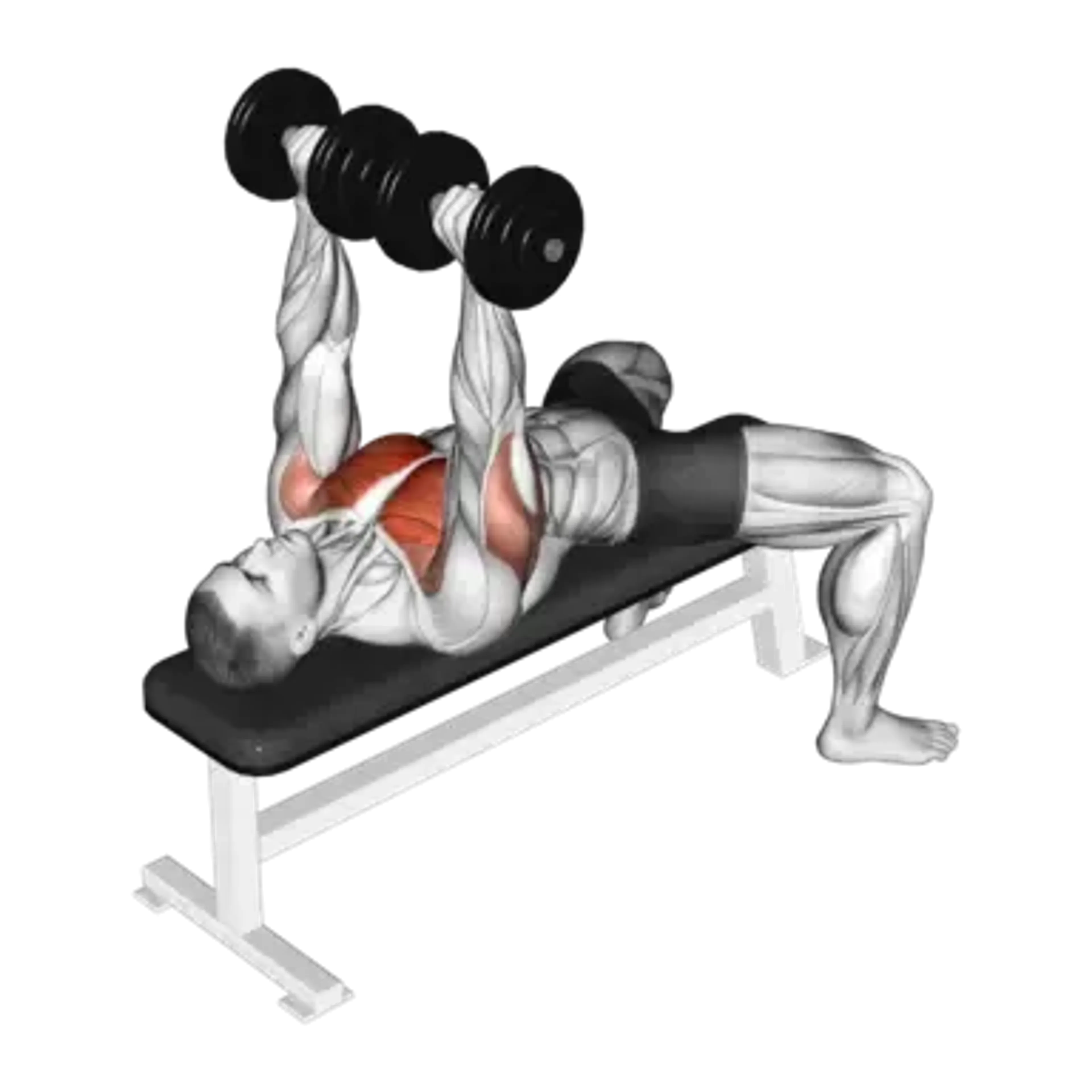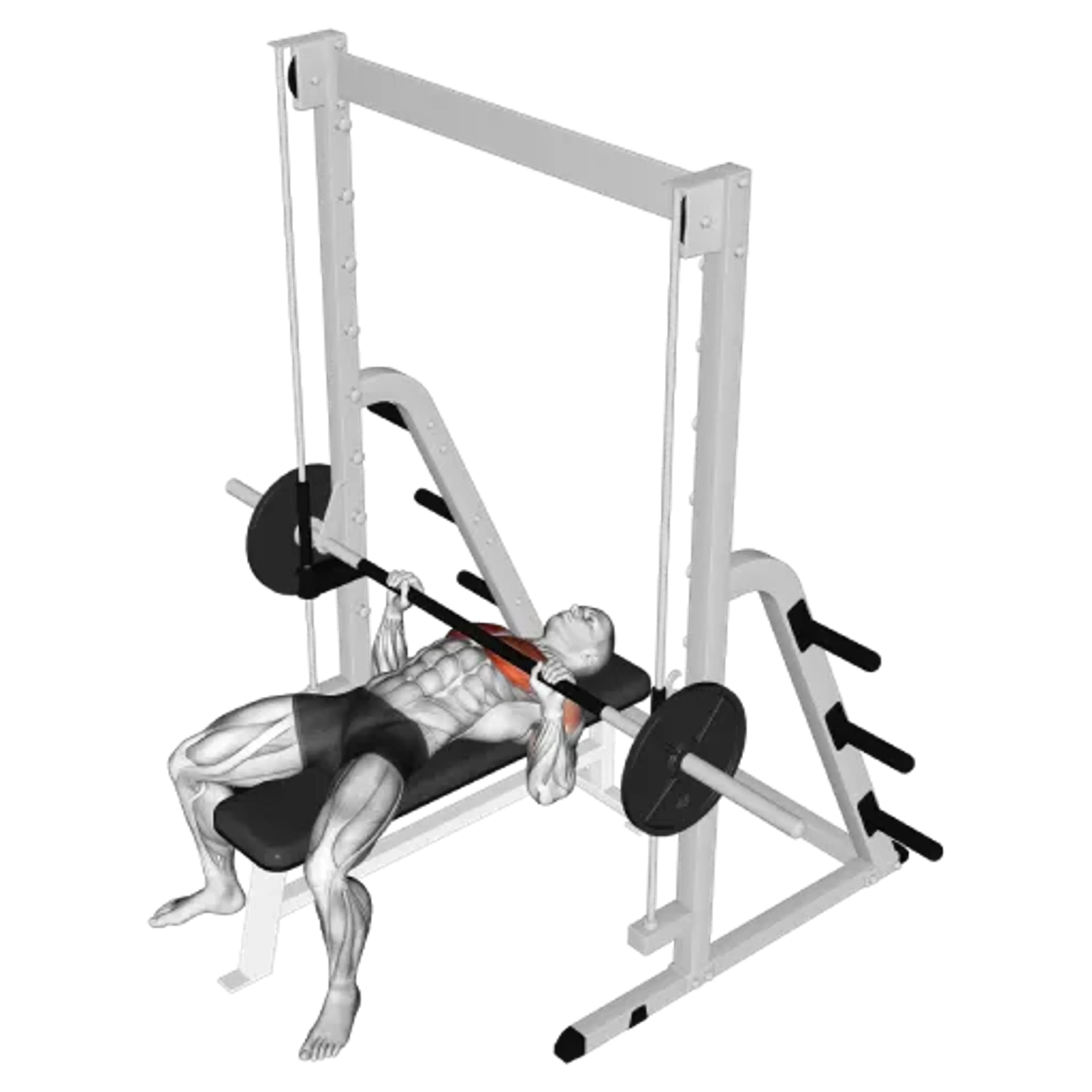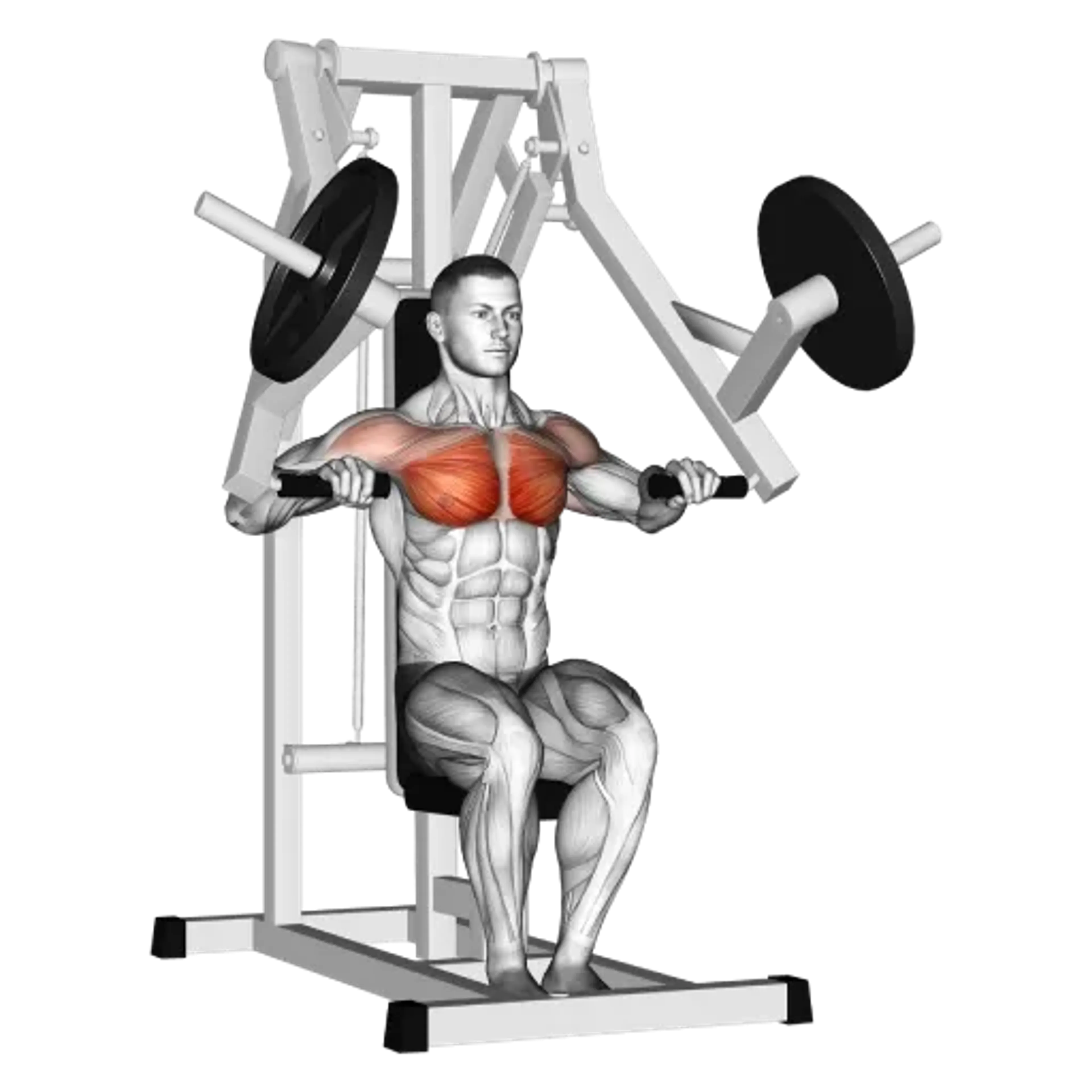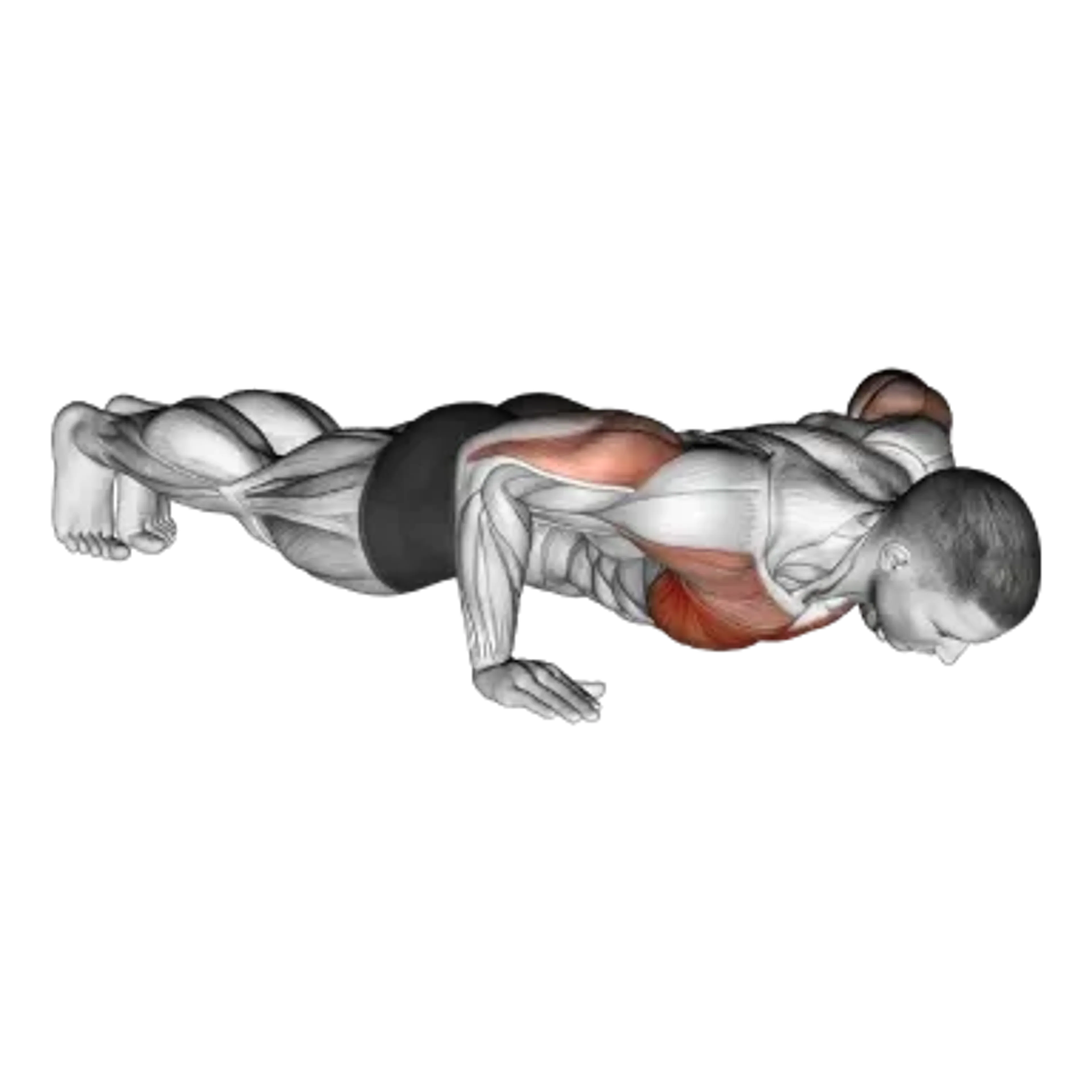Cable Standing Chest Press

Overview
- Primary Focus:
- Chest.
- Equipment:
- Cable.
- Difficulty:
- Intermediate.
General Information
Cable Standing Chest Press is a compound exercise that primarily targets the chest and also engages the triceps and front shoulders. It is an intermediate-level movement that adds a core-bracing demand while preserving the smooth resistance profile of cables.
Standing work lets you adjust stance and body angle to find a shoulder-friendly press path and a strong end range. Constant cable tension promotes hypertrophy and controlled tempo without the need for heavy loading.
Height of the pulleys can bias different portions of the pec, and a slight forward lean increases mid-range intensity. The setup fits well in limited spaces and allows easy bilateral or unilateral variations.
When you want to emphasize upper chest or stability, consider an Incline Cable Chest Press or transition to a Machine Chest Press when you need maximal stability. Expect a deep stretch and steady pec tension with minimal joint irritation when technique stays crisp.
Muscles Worked
- Pectoralis Major
- Primary
- Triceps Brachii (Long Head)
- High
- Deltoid
- Medium
- Triceps Brachii (Lateral Head)
- Medium
- Triceps Brachii (Medial Head)
- Medium
- Serratus Anterior
- Low
Instructions
- Set pulleys around mid-chest height and attach two single handles. Stand centered between stacks.
- Take a small step forward into a staggered stance. Slightly lean forward while keeping ribs down and glutes lightly engaged.
- Bring elbows just below shoulder height and about 45–60 degrees from your torso. Keep wrists neutral and forearms stacked.
- Brace your midline and press the handles forward on a slight inward path until elbows are nearly straight without locking hard.
- Pause briefly in front of the chest line while avoiding shoulder shrug and lumbar extension.
- Control the return, allowing the elbows to travel back until you feel a comfortable pec stretch.
- Maintain balance through the front foot, and keep head, ribcage, and pelvis aligned as you repeat.
Common Mistakes
Injuries
Cable Standing Chest Press is a low risk exercise when performed with proper technique.
Shoulder irritation often comes from excessive elbow flare or letting the shoulders roll forward. Keep elbows modestly tucked, wrists straight, and avoid over-leaning.
Choose loads you can decelerate smoothly and keep the stretch pain-free. Regress by shortening the step distance or raising pulley height; progress with small weight jumps or a brief pause in the stretched position.
Stop or modify if you feel sharp pain, instability, or tingling down the arm.
Alternative Exercises
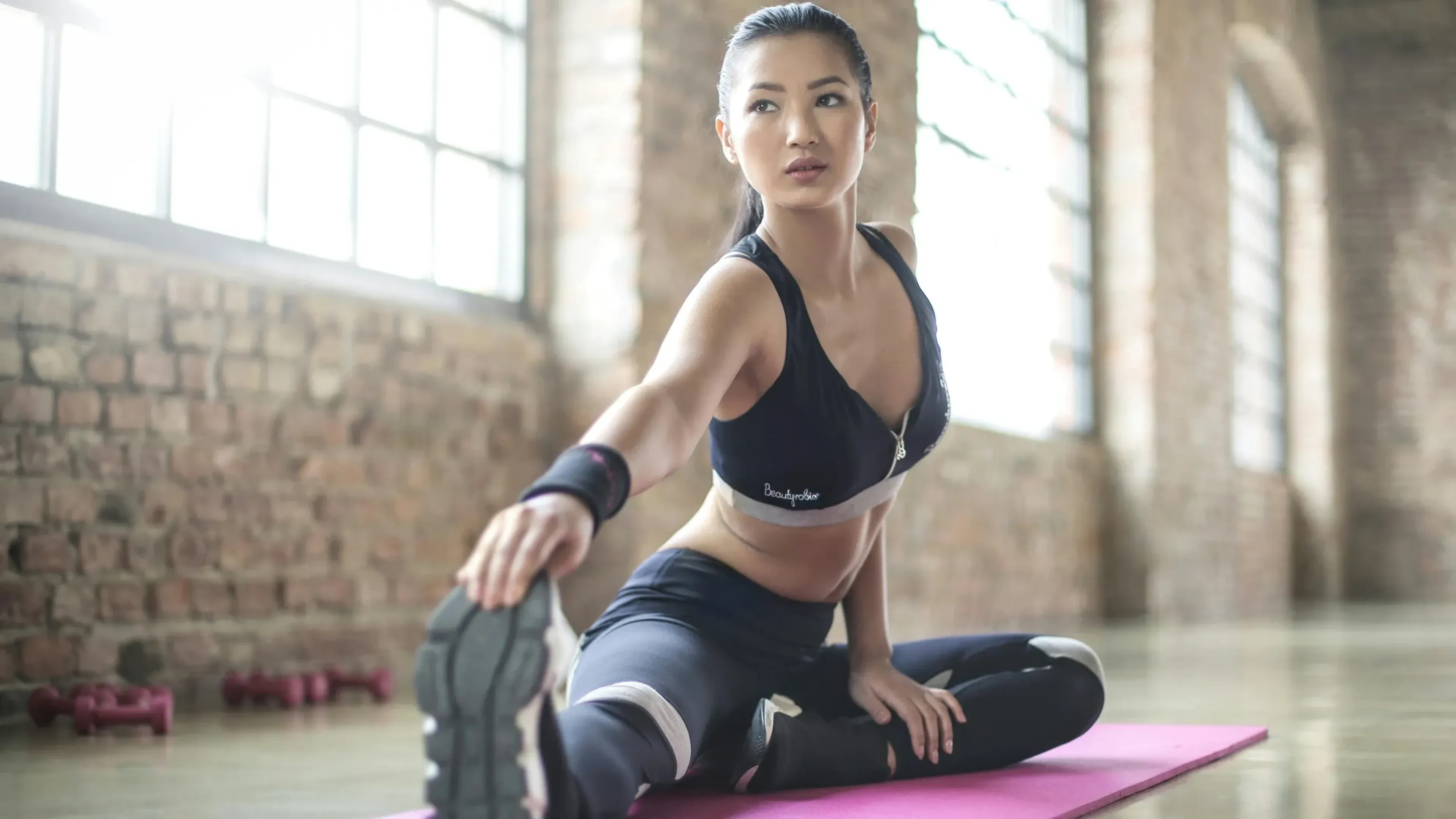
Frequently Asked Questions
- Q: Where should the pulleys be set?
Mid-chest height works for most lifters. Adjust slightly up or down to keep the press path in line with the chest.
- Q: What stance should I use?
Use a small staggered stance for balance with a slight forward lean. Switch lead foot each set to stay symmetrical.
- Q: How should my elbows travel?
Keep them slightly below shoulder height and about 45–60 degrees from the torso to keep tension on the pecs.
- Q: What rep range is best?
8-12 reps for strength-hypertrophy, 10-15 for steady tension and control. Keep 1-3 reps in reserve on most sets.
Overview
- Primary Focus:
- Chest.
- Equipment:
- Cable.
- Difficulty:
- Intermediate.
